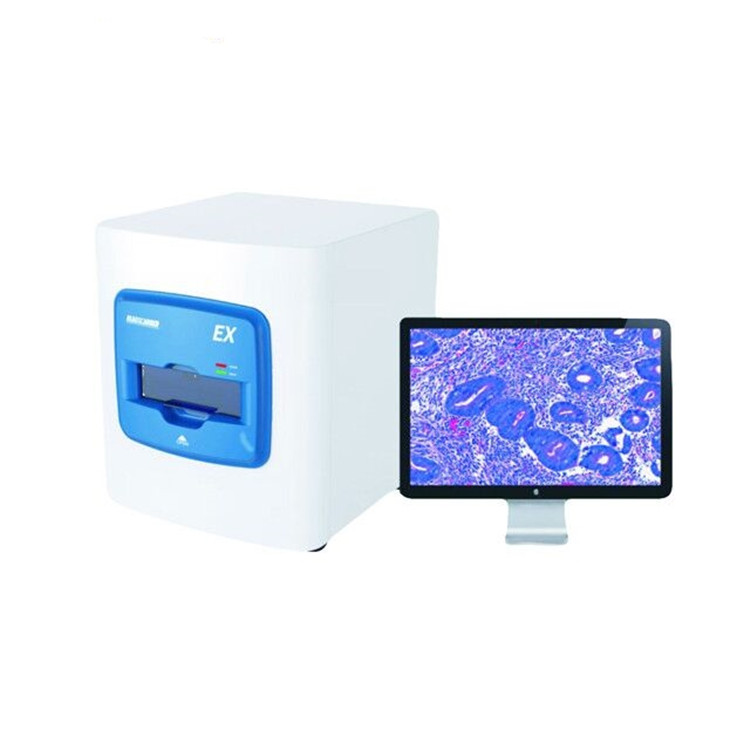
In recent years, digital technology has dramatically transformed the field of pathology. One of the most impactful innovations is the Histology Pathological Tissue Slide Scanner, which plays a pivotal role in advancing diagnostic accuracy and workflow efficiency. At ysenmed-morgue, we offer cutting-edge scanning solutions designed to meet the evolving needs of modern pathology labs. This article explores how these scanners are revolutionizing laboratories, what to consider when purchasing one, and how to implement it effectively.
A Histology Pathological Tissue Slide Scanner is a high-resolution imaging device that digitizes glass microscope slides for clinical or research purposes. These scanners convert physical tissue samples into digital formats, enabling pathologists to review, annotate, and share images using computer systems. This transition from traditional microscopy to digital pathology has led to significant improvements in diagnosis, collaboration, and archiving.
Also referred to as a digital pathology slide scanner, histology slide imaging system, or microscope slide digital scanner, this equipment is integral to digital histopathology. It supports whole slide imaging (WSI), where an entire slide is captured at high resolution and displayed for virtual examination.
Digital slides allow for more precise analysis compared to traditional microscopes. With zooming, panning, and annotation tools, pathologists can scrutinize tissues in finer detail. Consequently, virtual microscopy contributes to faster, more reliable diagnoses.
Through automation, these devices streamline the slide review process. Multiple slides can be scanned and uploaded simultaneously, making it easier to manage high-volume caseloads. Additionally, integration with clinical pathology equipment allows seamless data management.
With digital formats, slides can be shared across locations instantly. This is especially valuable in telepathology solutions, where remote consultations are possible without delays caused by physical shipping. Such capabilities enhance collaboration between specialists worldwide.
Digitized slides are easier to store, retrieve, and analyze compared to physical ones. This not only saves space but also supports long-term research and AI integration, enhancing the lab's diagnostic capabilities.
Selecting the right histology slide imaging system involves understanding your lab's specific needs and long-term goals. Below are critical factors to evaluate:
High-resolution scanning is essential for accurate diagnoses. Choose a pathological slide digitizer that offers true color rendering, high magnification (up to 40x), and clear image stitching capabilities. This ensures diagnostic integrity and clarity.
Labs handling large volumes of samples should prioritize scanners with high-speed performance. Some models can scan up to 400 slides per day. Faster throughput supports time-sensitive diagnoses and boosts overall efficiency.
Ensure the scanner integrates well with your Laboratory Information System (LIS), PACS, and other clinical pathology equipment. Compatibility prevents workflow disruptions and enables seamless image sharing and data archiving.
Choose a system equipped with intelligent software features such as automated tissue detection, image enhancement, and AI-powered analysis. These tools support diagnostic accuracy and enable more efficient use of pathologist time.
Consider the physical space available in your lab. Some tissue sample scanners are compact, while others are designed for high-throughput operations and require more room. At ysenmed-morgue, we offer models tailored to various lab sizes.
Make sure your scanner complies with regional and international medical device regulations. This ensures safety, performance, and eligibility for clinical use.
To fully leverage your investment, follow these best practices:
Slides should be properly stained, labeled, and cover-slipped before scanning. Ensure there are no bubbles or debris, as these can interfere with image quality.
Maintain optimal performance by scheduling routine maintenance and calibration. Follow manufacturer guidelines and consult with technical support teams like those at ysenmed-morgue.
Train laboratory staff to operate the scanner and its software efficiently. This reduces user error and maximizes the technology's benefits.
Implement a robust data management strategy, including secure backups and version control. Use cloud-based systems where possible for scalability and remote access.
Ensure patient data is encrypted and access-controlled to meet HIPAA or GDPR requirements. Choose scanners with built-in data security features.
Despite their advantages, adopting digital pathology scanners comes with challenges:
Initial Cost: Though high, the ROI improves over time due to increased efficiency.
IT Infrastructure: Ensure your network can handle large image files. Upgrade storage and bandwidth if needed.
Change Management: Encourage staff adoption through training, demonstration of benefits, and phased implementation.
Digital pathology is rapidly evolving. Key trends include:
AI Integration: Deep learning models are being trained to identify specific diseases and anomalies in digitized slides.
Cloud-Based Storage: Enables labs to manage vast datasets efficiently and access slides remotely.
Interoperability Standards: Industry-wide standards are emerging to ensure cross-platform compatibility.
Automation: New models can automate everything from slide loading to image labeling, further enhancing productivity.
Additionally, future histology pathological tissue slide scanners are expected to feature real-time diagnostics, augmented reality overlays, and even voice-activated controls. These innovations will make pathology more precise and user-friendly.
Moreover, as global demand for digital pathology slide scanners continues to rise, especially in educational and research institutions, manufacturers are focusing on affordability and scalability. Mid-sized labs will soon have access to technologies once reserved for major academic centers.
Another critical development is the growing use of digital pathology in clinical trials and pharmaceutical research. Digitized slides facilitate global study collaborations and standardized scoring systems, making research more robust and reproducible.
The Histology Pathological Tissue Slide Scanner is transforming how pathologists work by enabling faster, more accurate, and collaborative diagnostics. From virtual microscopy to telepathology solutions, these scanners offer multiple benefits that drive lab efficiency and improve patient outcomes.
By investing in high-quality, compliant equipment from trusted providers like ysenmed-morgue, labs can stay at the forefront of digital histopathology. Explore our range of digital pathology slide scanners, microscope slide digital scanners, and pathological slide digitizers to discover the future of pathology—digitized, intelligent, and accessible.
For expert consultation and tailored solutions, visit ysenmed-morgue today and transform your pathology workflow for tomorrow.